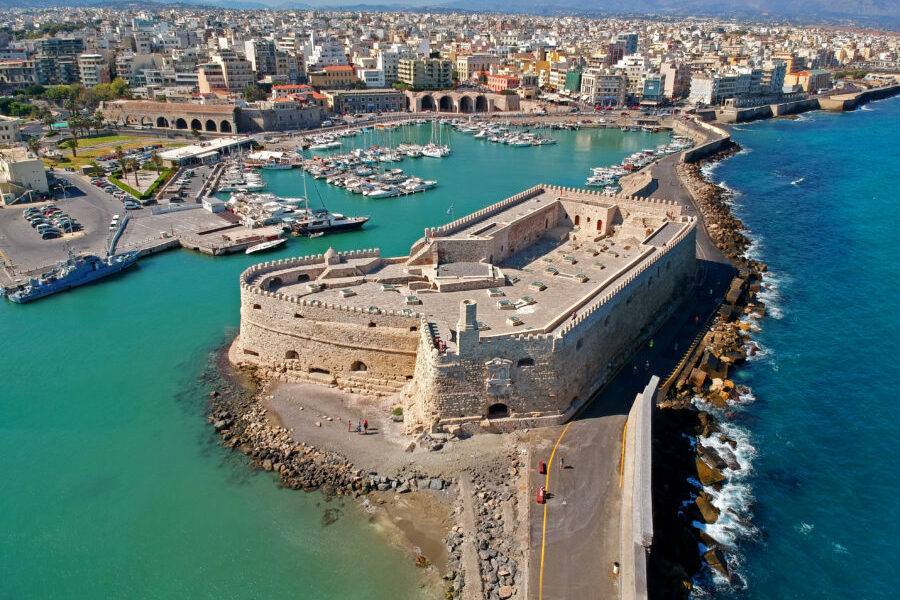Stroll through the squares of Heraklion and its top historical and cultural attractions.
The modern, bustling, but also historic Heraklion, with its Venetian walls, is always full of movement and life. Heraklion offers good food and excellent evening entertainment and has monuments, great museums, attractions, services, and universities, ensuring Crete's largest city is always bustling.
City walk
The most beautiful spot in the centre of Heraklion is the small square with the church of Agios Titos. It was initially built after Nikephoros Phokas liberated Crete in 961 AD and became the metropolis of the new Episcopate of Crete in the Second Byzantine Period.
Next to it is the Venetian Armory (Armeria) and Loggia, which houses the town hall and faces 25th August Street. It was for the Duke and dignitaries, and it is worth noting the coats of arms, trophies, 82 metopes and 14th-century arcades.
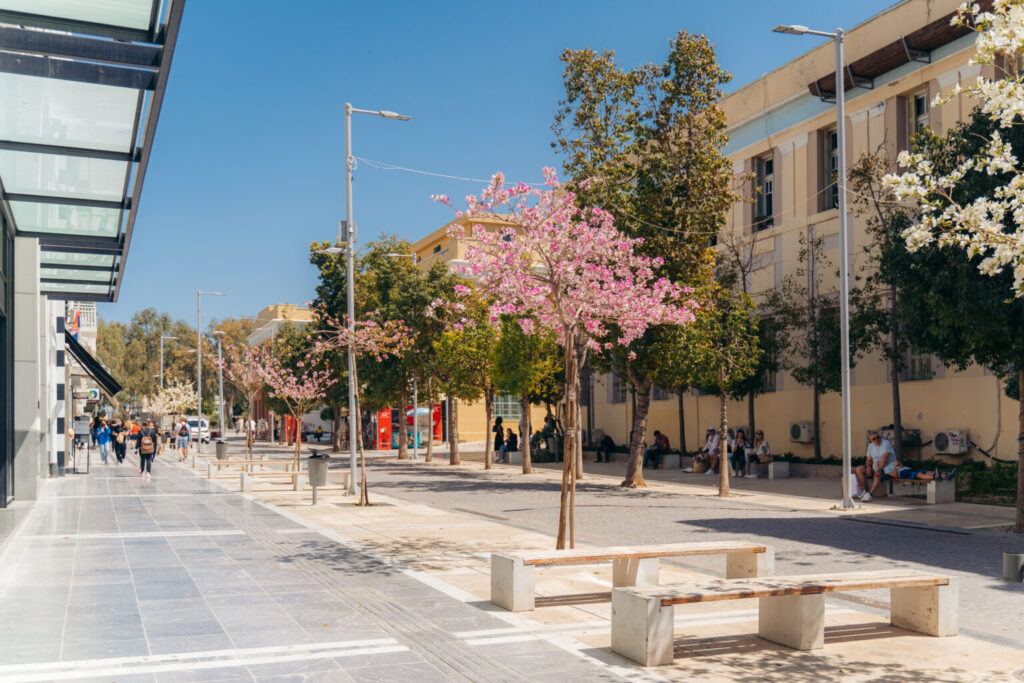
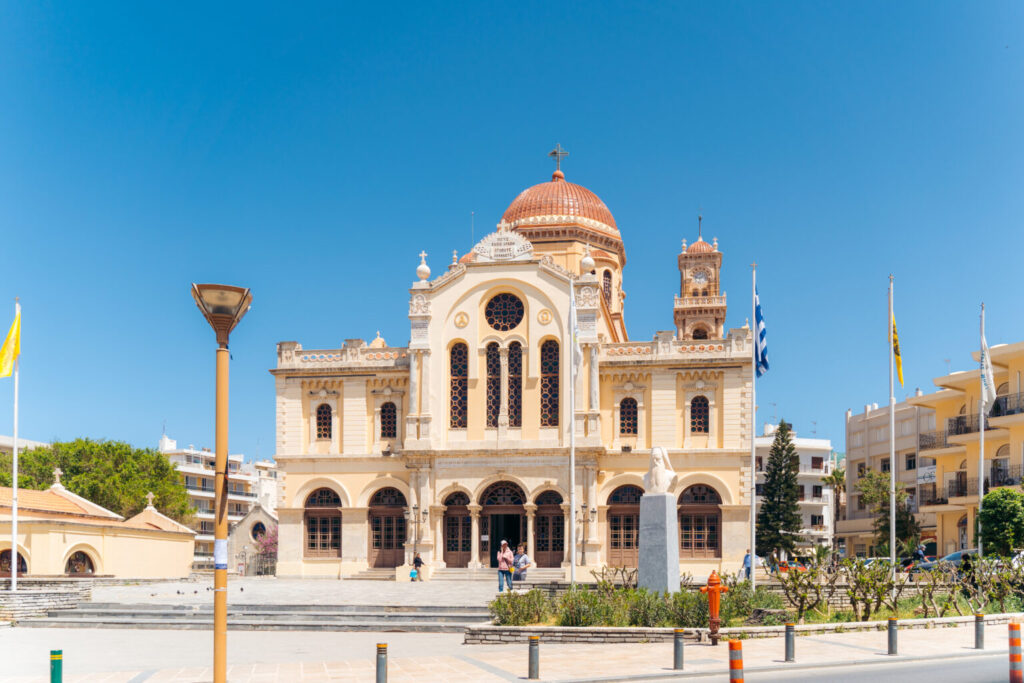
The other wonderful building is the church of Agios Markos of the Venetians, where the Venetian lords took office and where the dukes were buried.
Opposite is the famous Lions Square, the navel of Heraklion. Like the neighbouring Theotokopoulos Square, it is full of café-bars, restaurants, and a very young crowd.


Ag. Catherine of Sinai is 100 metres from the square, and near it is the Metropolitan Church of Ag. Minas, patron of the city.
The commercial pedestrian street of Daidalos, full of branded shops, connects Lions Square with Eleftherias Square, where political gatherings and rallies have always occurred.
On its northwest side, on Xanthoudidou Street, stands out the Archaeological Museum of Heraklion building.
Returning to Lions Square and proceeding to the west, you enter the wide pedestrian street of Handakos, which has shops and cafes. It leads to the northern beach, Sofoklis Venizelou Avenue, where the Museum of Natural History is located.
Walking down the boulevard, you will notice the neoclassical building of the Historical Museum, which is next to a square with restaurants.
Next, you find the church of Saints Peter and Paul, built in the first years of the Venetian rule as the catholicon of the monastery of the Order of Saint Dominic (Domenicani Predicatori). It is one of the oldest architectural monuments of the Cistercian monks of the 12th century.
At the port

At the entrance to the Venetian harbour stands Koules (Castello del Molo, or Rocca al Mare). The Venetians built it to protect the jetty and port. It took its final shape between 1523 and 1540.
It has been repaired many times and was a prison during the Turkish occupation.
The port, which is full of boats and fishing boats, played an important role, especially during the Arab occupation, the Venetian occupation, and Ottoman occupation.
It began to lose its importance in the 19th century when it suffered significant damage.
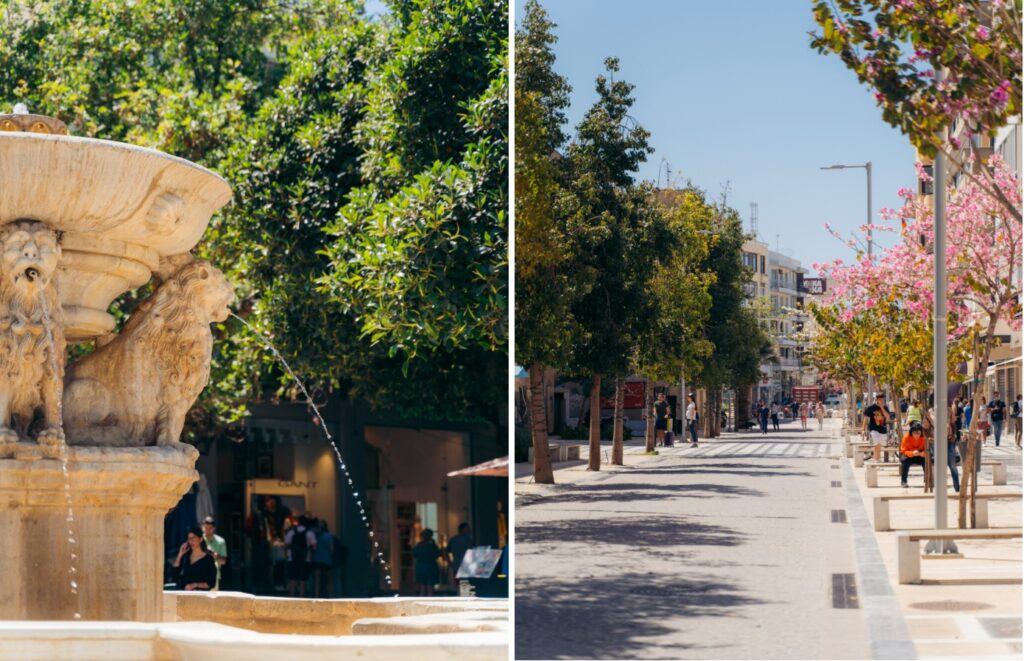
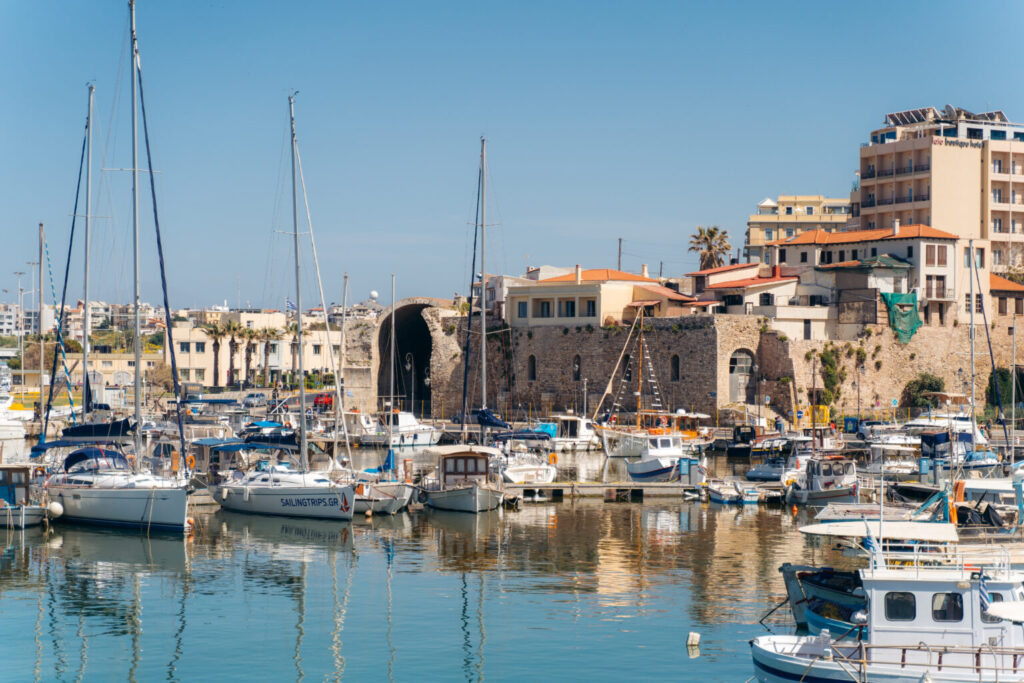
The Venetian Youth stand out opposite the port, where the 25th of August Street ends at the beach avenue. Their elongated vaulted spaces housed galleys for repairs or storage.
Today, only 5-6 of the 19 still exist, and they date between the 15th and 17th centuries.
On the walls

Walking up the walls, you will enjoy a panoramic view of the city and the sea. Paths have been formed in their largest part, and there are benches for resting.
The Venetian walls, which still demarcate the old city today, were a marvellous work of art, and because of them, Heraklion emerged as the most well-fortified state in the Mediterranean.
They were built to designs by the famous Venetian engineer Michele Sanmicheli and took more than 100 years to complete. They are 3 km long and have four gates and seven bastions.
Thanks to these, the city withstood the siege of the Turks for 25 years, who finally captured it in 1669, after the betrayal of a Venetian engineer who let them in at night through a secret entrance.
In modern times, the walls have been repaired in various phases.
Vali Vaimaki is a columnist for Travel. Translated by Paul Antonopoulos.
READ MORE: Plakes: A beach in Astypalaia with calm waters and is perfect for relaxation.

